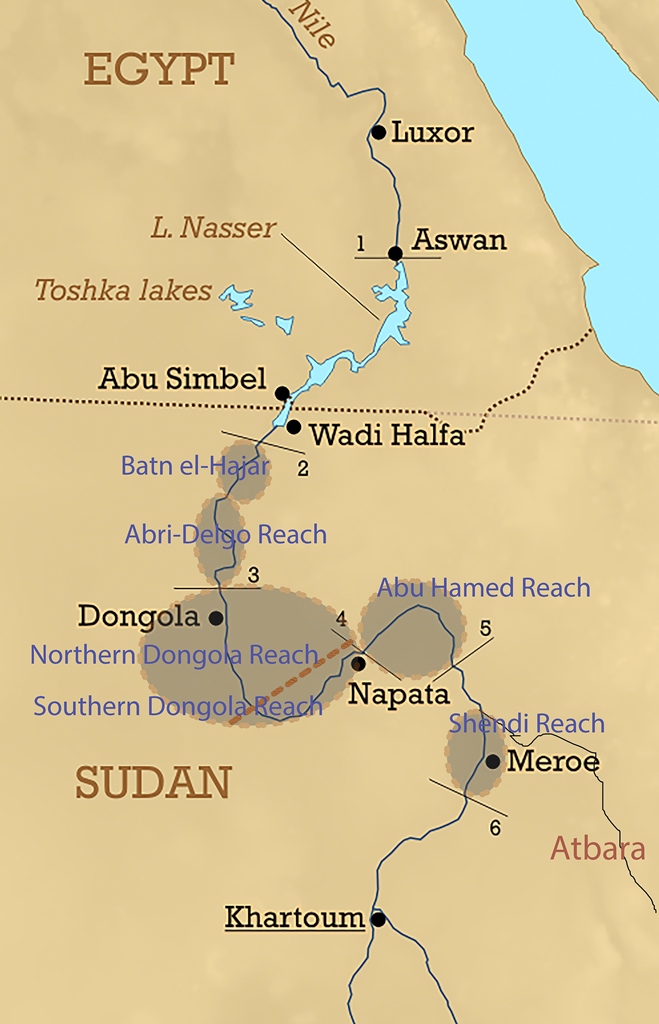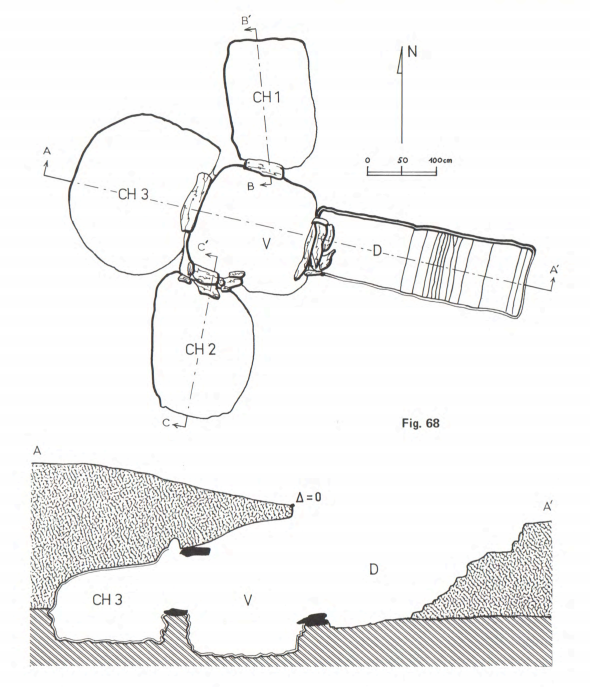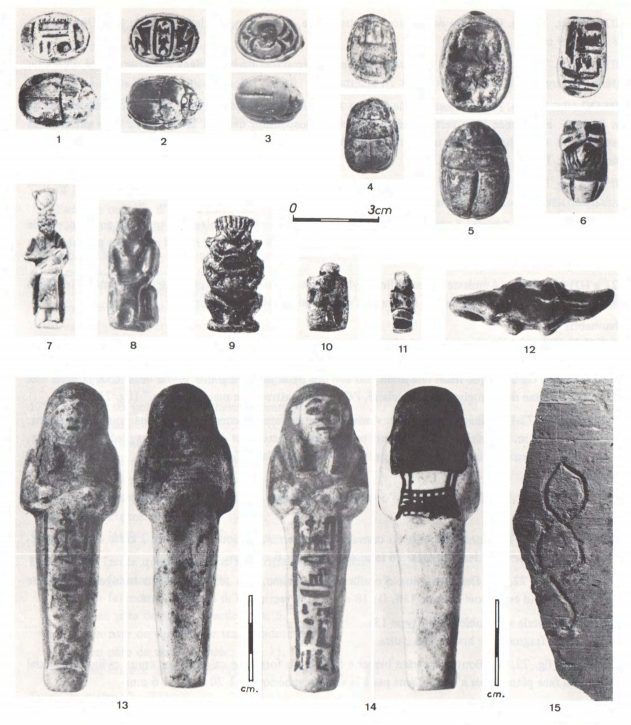Most of the available burial evidence in New Kingdom Nubia come from large cemeteries associated with temple-towns. Evidence from the hinterland of colonial towns or ‘peripheral’ areas such as the Batn al-Hajar are usually discontinuous and pose various challenges to interpretation (figure 1). Edwards recently raised discussion on the role of isolated tombs in such areas. According to him, mortuary evidence from such locations, in contrast with evidence from formal cemeteries, “should not narrow our perspectives, to the exclusion from our narratives of the vast majority of the population who were buried otherwise” (Edwards 2020: 396).

Ginis West is located north of Amara West, on the way to the Batn al-Hajar. In our concession area, evidence for formal cemeteries associated with established settlements is scarce, although continuing research and excavations will likely shed more light on this topic. In the New Kingdom, the whole area between Amara West and Lower Nubia, comprising the north Abri-Delgo Reach and the Batn el-Hajar represents a gap in our knowledge of New Kingdom Nubia. Revisiting the evidence produced by various surveys in these areas is crucial for us to develop new comparative research, especially evidence produced by the Archaeological Survey of Sudanese Nubia (ASSN, Edwards 2020), the Finnish Expedition to Sudanese Nubia (Donner 1998) and other projects working in the Batn el-Hajar; and, particularly for us working in the Attab-Ferka stretch of the Nile, Vila’s survey south of Dal cataract (Vila 1975-79).
In the Batn el-Hajar, the ASSN uncovered not only simple pit graves, characteristic of non-elite burial grounds, but also a few elaborate tombs. Those can be compared to tombs at main cemeteries throughout the Nile Valley, at least in terms of substructures (Edwards 2020; see Spence 2019). At Ginis West, Vila’s team excavated a remarkable New Kingdom tomb (site 3-P-50). Based on a first look at the material culture retrieved inside, I would say it was used especially in the later part of the New Kingdom. The tomb was cut at the intersection between the alluvial plain and bedrock, and a few supporting slabs were used to reinforce the four subterranean chambers, accessible through a descending passage (figure 2).

The tomb was heavily looted, with scattered bones found in the descending passage and chamber three. The tomb likely housed the burials of various contemporaneous individuals, as well as later burials. No superstructure has been detected, although Binder pointed out to later New Kingdom tombs combining Egyptian-style substructures with tumuli superstructures at Amara West, Ginis and Sesebi (Binder 2014: 45).
The material culture from tomb 3-P-50 suggest cultural affinities with both Egypt and Nubia. On the Egyptian side, there are figurative scarabs, pendants representing deities and animals, including a rare crocodile pendant, an equally rare wooden headrest, and two late 19th Dynasty shabtis of Isis, lady of the house (figure 3). Various types of beads were also excavated, including long beads and spacers, which are characteristic of elite cemeteries and monumental tombs in New Kingdom Nubia (Lemos 2020). However, various earrings made of shell and carnelian were also found (figure 4), which represent affinities with local styles, which were later exported to Egypt (Lemos 2020). The combination of Egyptian-style objects with stone/ivory/shell earrings and bangles is especially strong at Soleb (Schiff Giorgini 1971).


Tomb 3-P-50 did not belong to a formal cemetery as its material culture alone would suggest. Vila only identified two later (likely Christian) tombs in the vicinity of the site. What is a relatively elaborate tomb containing a large quantity of restricted items typical of large New Kingdom colonial cemeteries doing at Ginis West? There is still so much for us to understand about ‘peripheral’ zones in New Kingdom Nubia. Tombs like 3-P-50 at Ginis West and a few examples from the Batn el-Hajar allow us to think that, at least for some people, what we characterise as ‘peripheries’ were actually the centre of life and death experiences of colonisation in New Kingdom Nubia. My research for DiverseNile will hopefully shed light onto shifting conceptions and experiences of ‘centres’ and ‘peripheries’, which will allow us to rewrite historical narratives of Nubia in the New Kingdom based on local experiences instead of Egyptian ways of classifying history.
References
Binder, M. 2014. Health and Diet in Upper Nubia through Climate and Political Change. A bioarchaeological investigation of health and living conditions at ancient Amara West between 1300 and 800 BC. Unpublished PhD thesis, Durham University.
Donner, G. 1998. The Finnish Nubia Expedition to Sudanese Nubia, 1964–65. Helsinki: Vammalan Kirjapaino Oy.
Edwards, D. ed. 2020. The Archaeological Survey of Sudanese Nubia, 1963-69. Oxford: Archaeopress.
Lemos, R. 2020. Foreign Objects in Local Contexts: Mortuary Objectscapes in Late Colonial Nubia. Unpublished PhD thesis, University of Cambridge.
Schiff Giorgini, M. 1971. Soleb II: Les Nécropoles. Firenze: Sansone.
Spence, K. 2019. New Kingdom Tombs in Lower and Upper Nubia. In Handbook of Ancient Nubia, ed. D. Raue, 541–566. Berlin: De Gruyter.
Vila. A. 1975-79. La prospection archéologique de la vallée du Nil au sud de la Cataracte de Dal. Vols 1-11. Paris: CNRS.
